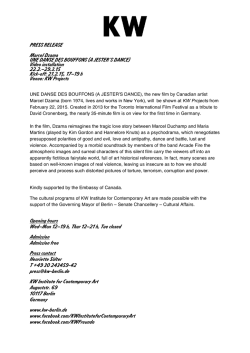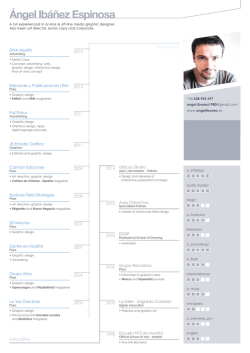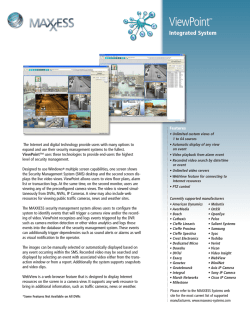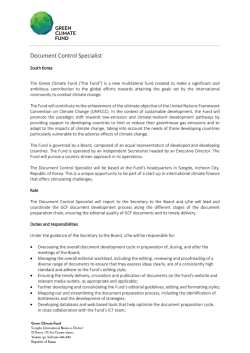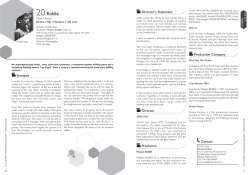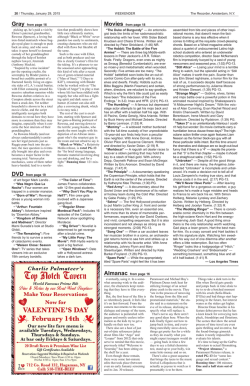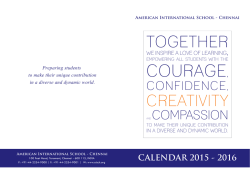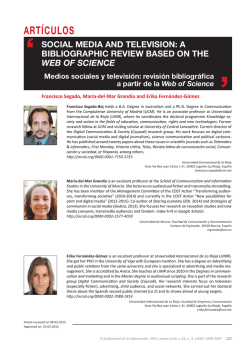
Graphic Era Hill University I Semester BJMC101-SCIENCE
I Semester BJMC101-SCIENCE OF COMMUNICATION Credits 04 L 04 Total marks: 100 Learning Outcome: The outcome of the course is to provide students a clear understanding of the basics of communication, theories and models of communication. Course Contents: Unit-I Definition of communication Definition, concept and process of mass communication, Characteristics and functions of mass communication, Technologies of mass communication, Concept of global communication and cultural diversity, elements of communication, scope and need of communication in society, Functions and objectives of communication. Unit II Different types of communication Traditional communication forms, Verbal communication, Non-verbal communication, different type of communication-inter personal communication, intra personal communication, inter group, intra group communication, mass communication, typology of audiences. Unit-III Models of communication Lasswell uses and Aristotle, Osgood, New comb, SMR, SMCR, Shannon and Weaver, Osgood, Schramm, Westley and Maclean, Gerbner. Unit-IV Theories of communication Flow chart of mass communication, Dominant paradigm, Meaning theory, Barriers in communication, gratification, cultivation theory, Relational theory, Transactional theory, , Relational theory, two step and multi step theory, convergent and gate-keeping, Bullet theory, agenda setting theory Unit –V Theories of communication Media systems and theories: authoritarian, libertarian, socialistic, social-responsibility, development, participatory. Mass media: public opinion and democracy, Media culture and its production. Media organizations, media content, market driven media content, effects, cultural integration and cultural pollution Suggested Reading 1. David Berlo (1960). The Process of Communication. London. 2. Uma Narula (1976), Mass Communication Theory and Practice. New Delhi: Har Anand. 3. Denis Mcquail and Windhal. Communication models. 4. John Fiske: Introduction to communication studies London: Routledge. 5. Denis Mcquail (1993) Media performance. London: Sage. 6. Denis Mcquail (2005) Mass communication theory. New Delhi: Graphic Era Hill University I Semester BJMC 102 HISTORY OF MASS COMMUNICATION IN INDIA Credits 03 L 03 Total marks: 100 Learning Outcome: The outcome of the course is to provide students a clear understanding of the basics history of Indian journalism. Course Contents: UNIT-1 Brief history of newspaper Early communication systems in India –first Indian newspaper; print media in nineteenth century; Indian press and Indian freedom movement – brief history of major English, Hindi and other Indian language newspapers and magazines. Unit-2 Print: as a medium of communication Early efforts in printing – newspapers – types of newspapers –contents – characteristics; magazines – characteristics and types; print media in India : an overview; books as a medium of communication – types of books – book publishing in India. UNIT-3 Brief history of Radio Radio as a medium of mass communication, All India Radio, development of private radio channels. UNIT-4 Early efforts - film as a mass medium; historical development of Indian films - silent era, talkies - parallel cinema -commercial cinema ; documentaries - issues and problems of Indian cinema, major trends and contribution in social changes. UNIT-5 Brief history of T.V journalism Evolution and growth of electronic media: – a brief history of telecasting in India, Nature and characteristics of the medium, Television: growth and development of private channels in India, Introduction to major news channels, and Emergence of digital media. Reference-The history of American journalism-by Julie Hedgepeth Williams, James D. Startt, William -- Indian Broadcasting by H R Luthra, (chapter 1-3) - Mass Communication in India by Kewal J. Kumar - Satellite Invasion by SC Bhatt, Gyan Pub. Delhi Graphic Era Hill University I Semester BJMC103 RADIO JOURNALISM Credits 03 L 03 Total marks: 100 Learning Outcome: The outcome of the course is to provide students a clear understanding of the basic functions of Radio. Radio programme, radio bridge show and Phone in programme. Unit I WRITING FOR RADIO -Spoken language writing - writing for programmes writing for radio commercials- illustrating copy with sound effects; news writing - structuring radio-copy; editing, reporter's copy – compiling radio news bulletins, programmes; writing intro to bytes- writing headlines, teasers and promos, Using sound bites and actualities Unit II Generic element: content and format, Spot light, talk, review, discussion, news reel, Interactive programs, Special audience programs, structuring a radio report, news capsuling and radio commentary, talk, review, discussion, news reel, Special audience programs, studio interviews –studio discussions –phonein programmes, current affair programmes. Unit III Role and responsibilities of a reader, Do's and don'ts for reader, Modulation and voice quality, Voice training – effective use of voice; interview techniques pronunciation, Codes and ethics in broadcasting, Basics of audio recording, Audio control and sound effect, Stereo and mono sound Unit-IV production process and techniques, aspects of sound recording, types of microphones and their usage, field recording skills; radio feature production; radio documentary production; feature production, studio chain, live studio broadcast with multiple sources - news production, radio documentary production Unit-V Recording of programs, selection of sound effects, editing and mixing techniques, Process of planning, scheduling and transmission, Evaluation of programs and quality Control Reference- Awasthy G.C. :Broadcasting in India, Allied publishers, Mumbai, 1965. - Chatterji, P.C. :Broadcasting in India, Sage, New Delhi, 1988. - Masani, Mehra :Broadcasting and People, National Book Trust, NewDelhi,1997. - Luthra, H.R. Indian Broadcasting, Publication Division, New Delhi, 19986. - Crook, Tim, Radio Drama; Theory and Practice, Landon. Graphic Era Hill University I Semester BJMC-104 DESIGNING FOR MEDIA Credits 03 L 03 Total marks: 100 Learning Outcome: The outcome of the course is to provide students a clear understanding of the design,layout and graphics of the newspapers. Unit 1 Design Design and layout for Print media. Unit 2 Hoarding, kiosk, interior, exteriors, exterior signage, corporate identity, house styles Unit 3 Usage of typography –fonts, colour scheme, Images Unit 4 Graphics for web and print Use of HTML, JAVA, CAD for designing Graphic Era Hill University I Semester BJMC-105BASIC OF COMPUTER APPLICATIOS Credits 03 L 03 Total marks: 100 Learning Outcome: The outcome of the course is to provide students a clear understanding of the different features of computer software. Unit- I: History of computers History of computers.Computer hardware.Central Processing Unit. Input devices. Output devices. Storage devices.Communication devices, Accessories.Computer software.Introduction to Windows.Working in Windows.Desktop operations.Windows explorer.Manipulation of files and folders.Windows accessories. All usages of M.S. office and other relevant softwares for media. Unit- II: Basic of computers Word processor basics.New blank document and toolbars. Manipulation of the first document. Editing the document. Designing and redesigning the document. Working with graphs, pictures, audio, and video in documents. Records and mail merge. Unit III: statistical calculations Spreadsheet basics. Excel environment. Entering data. Excel toolbars. Creation and manipulation of charts and graphs. Manipulation of data. Mathematical and statistical calculations. Excel functions. Insertion of rows and columns.Changing the layout. Unit IV: Introduction to database Introduction to database, Defining database. Meaning and functions of database management system, Creation and manipulation of tables .Updating tables. Working with forms. Handling queries. Generating reports PowerPoint Introduction to PowerPoint,Starting PowerPoint. AutoContent Wizard. Working with texts, graphs, pictures, audio, and video in slides, Design templates. Adding transition effects to slides, Adding animation in slides, previewing the contents Unit- V: Quark Express Graphic Era Hill University II Semester BJMC201- PRINT JOURNALISM Credit 4 L4 Total marks: 100 Learning Outcome: The outcome of the course is to provide students a clear understanding of the print journalism along with the understanding of reporting, editing and newsroom organization. UNIT-1 Meaning, Nature & Principles of Reporting - , functions and responsibilities, Basics of Reporting, writing news – lead – types of leads; body – techniques of re-writing, news agency copy. News, Definition, Elements, Sources and Types - Structure of News. UNIT-2 Reporting: reporting techniques – qualities of a reporter – news-value, sources – types –pitfalls and problems in reporting – attribution – off-the-record – embargo – news pool; follow-up – advocacy, interpretation, investigation. Reporting – crime, courts, society, culture, politics, commerce and business, education Reporting ; practical UNIT-3 Newsroom Organization -Small, Medium, and Big Daily Newspaper - Editorial Staff Pattern; Role and Functions of the Editor, Chief Sub-Editor, Sub-Editors, News Editors and Staff, Functions and qualifications of a sub-editor and chief-sub editor. UNIT-4 Editing: Nature and need for editing. Principles of editing, editorial desk, functions of editorial Desk, copy editing, and preparation of copy for press – style sheet – editing symbols, Unit-5 Proof reading, copy holder symbols and their significance, Copy selection and copy testing, basic principles of translation. References:1. Emery, Adult & Ages: Reporting and writing the News. 2. John Hohenberg: The professional journalist. 3. Ralph S. Izard: Reporting the citizen’s news. 4. M.V. Kamath: Professional journalism 5. Curtis Macdougall (1953): Interpretative reporting. New York: George Allen & Unwin Ltd. 6. Patanjali Sethi: Professional journalism Graphic Era Hill University II Semester BJMC202- ECONOMIC DEVELOPMENT AND PLANNING Credit 4 L4 Total marks: 100 Learning Outcome: The outcome of the course is to provide students a clear understanding of the economic development, capital accumulation, public and private sector in India. UNIT-1 Economic development : concept and general perspective, common characteristics of underdevelopment; developed and developing economies. Features of Indian Econimy. Strategies of development: balanced vs. unbalanced growth strategy; Mahalanobis model of economy. UNIT-2 Factors influencing economic growth. Capital accumulation as a factor in economic growth; role of education in economic development, Population and economic development (the two-way relationship). Aspects of human development: education, poverty and inequality of income distribution (with special reference to India); changes in the sectoral developmet since independence. UNIT-3 Agriculture: role of agriculture in India’s economic development, factors influencing productivity in agriculture, institutional factors, technological factors, pattern of ownership; Prices and availability of finance. Industry: the rate and pattern of industrial growth, New Industrial Policy 1991. UNIT-4 Public sector in India and its role and problems in the growth process; role of the small scale and cottage industries and government’s policy with respect to these; problem of industrial sickness.Budget and economic survey. UNIT-5 External sector: role of foreign aid, capital and MNCs in India’s growth process. Foreign trade: composition and direction. India’s balance of payments problem; impact of liberalization, particularly since 1991 on Indian economy – WTO and IMF conditionality. Graphic Era Hill University II Semester Credit 3 L3 BJMC203- PHOTO JOURNALISM AND PHOTOGRAPHY Total marks: 100 Learning Outcome: The outcome of the course is to provide students a clear understanding of photojournalism, aspects of photography and types of cameras along with their functions. UNIT-1 What is photojournalism Beginnings, necessity and significance Photography-elements and principlesvisual languages-meaning and photographer’s jargon. Composition of photography-subject and light. Photographic equipment, -camera types, formats, lens –their types and functions, film types and functions-accessories, News values for pictures- photo-essay-photo features, UNIT-2 qualities essential for photo journalism ,pictures for magazines, colour photography, impact of technology, Practical, field assignment and their evaluation. UNIT-3 Shots – focus- shutter speed-selection of subjects-different types of photographs- Photo editing and procedure- pictures for newspaper and magazines, digital photography and new age Printers. UNIT-4 Photographing people, portrait, lifestyle, wildlife, environment, sports, landscape, industrial, Disaster. Photography for advertising, conflict and war zone, political and social photography. UNIT-5 Camera, lights, and filters, Types and functions, Digital photography and printing Graphic Era Hill University II Semester BJMMC204- ADVERTISING Credit 4 Total marks: 100 L4 Learning Outcome: The outcome of the course is to provide students a clear understanding of advertisements, advertising agencies, advertising campaigns, etc. along with advertising research. UNIT 1 Evolution and growth of advertising; definitions of advertising; relevance of advertising in the marketing mix; classification of advertising; various media for advertising; national and global Advertising scene; socio-economic effects of advertising, Ad agency management, various specialist departments in an ad agency: (Account, Creative, Media Planning, HRD) UNIT 2 Client related issues and the process, business development, pitching for accounts; agency-client interface: the parameters - creative and media briefing process, agency-media interface, agency revenue earning and sources, agency audit, Mass media laws concerning advertising; apex bodies in advertising AAAI, ASCI etc.), ASCI and its code of conduct, case studies from ASCI, Advertising tools and practice; consumer behaviour: analysis, definitions and factors; defining consumer behaviour and its various factors; external environment, culture, sub-culture, social class, social group, family, internal statesperception, learning, motivation, personality, lifestyle and attitudes, etc.). UNIT 3 Consumer in economic theories, models of consumer behaviour; Brand management: definition, concepts and evolution of brand management - component of a brand: strategy and structure -brand equity, image and personality - corporate brand, Defining creativity, stages in the creative process, creative brief, advertising appeals, language UNIT 4 Copy - debriefing of campaigns; Public Information Campaign (PIC) Process of motivation and theories of motivation. Graphics: role and scope in advertising, design principles, use of colour in design, designs in colours; type and type faces. Media characteristics–defining media planning, media scene in India, sources of media information, media strategies, budgeting and presentation to client, media scheduling, reach and frequency, media weight theories, media buying and analyzing media information online, Advertising research UNIT 5 Scope and objectives; research as a decision making tool. Market research and advertising research; types of research: target marketing research, positioning research; pre-test research, post test research, audience research, methods of analyzing research (psychographic/life style research, psychophysiological research) Reference- ASCI code of advertisement - Advertisement code of Doordarshan - Advertising Copywriting, Philp Warad Burton Grid - Creative Advertising- Theory and Practice by Andre E. Mariarty Graphic Era Hill University II Semester BJMC205- BUSINESS COMMUNICATION Credit 3 L3 Total marks: 100 Learning Outcome: The outcome of the course is to provide students a clear understanding of Business Communication, communication skills, written communication and business reports. UNIT‐I Business Communication – Nature and process, forms of communication, communication skills in business, communication networks, barriers to communication role of UNIT‐II Communication Skills: Listening skills – cognitive process of listening, barriers to Effective listening, , speaking skills, public speaking, voice modulation and body language UNIT‐III Written Communication –types, structures and layout of business letters; presentative letters – sales letters, claim letters, employment letters, writing memo, notice and circular, Precis writing, effective e-mail writing skills. UNIT‐IV Business reports – Purpose and types, framework of business reports, presentation reports, brochures, issuing notice and agenda of meeting and minutes of meetings Graphic Era Hill University of III Semester BJMC301- PRINCIPAL OF MANAGEMENT Credit 4 L4 Total marks: 100 Learning Outcome: The outcome of the course is to provide students a clear understanding of Management through the understanding of Planning, organizing, directing and controlling. Course Contents Unit-1 Introduction : Concept, process and significance of management; Managerial roles; An overview of functional areas of management; Development of management thought; Classical and neo-classical systems; Contingency approaches Unit-2 Planning : Concept, process and types. Decision making – concept and process; Management by objectives; Corporate planning; Environment analysis; Strategy formulation. Unit-3 Organizing : Concept, nature, process and significance; Authority and responsibility relationships; Centralization and decentralization; Departmentation; Organization structure – forms and contingency factors. Unit-4 Directing : Motivation – Concept & Theories – (Maslow, Alderfer, Herzberg, MClelland, Porter & Lawler, Vroom); Financial and non-financial iincentatives of Motivation, Leadership – Leadership Theories, Leadership styles. Communication – Type, process and barriers. Unit-5 Controlling: Concept and process; Effective control system; Techniques of control. Change : Concept, nature and process of planned change; Resistance to change; Graphic Era Hill University Management of III Semester BJMC302- PROFESSIONAL VIDEOGRAPHY Credit 3 L3 Total marks: 100 Learning Outcome: The outcome of the course is to provide students a clear understanding of the factors affecting visual quality of video camera Image, able to handle different cameras: beta, digital & studio cameras. Learn & Practice different camera angles and camera movements. Learn about colour Temperature and do white balancing. Understand the problems of mix lighting i.e. indoor & outdoor lighting. Able to select lens, filters & microphones for electronic news gathering Unit 1 Introduction to T.V Technology T.V Scanning : Horizontal & Vertical, Picture formation, Frame & field rate, Resolution video bandwidth, sync. blanking signals, colour burst sensitivity, linearity etc. Television standards: NTSC, PAL, SECAM. Unit 2 Principle of Video Camera,Primary & secondary colours, Additive & subtractive process, Luminance &chrominance signals,Photo conduction, photo voltaic, photo emissive effect, Working principle of video camera, Block diagram of a video camera, Three tube, single tube, colour camera, Various sizes of pickup devices, CCD cameras Unit 3 Component and Controls of Video Camera Parts of a video camera, Different controls on video camera, Power switch, preheat,genlock, white balance, black balance, gain, iris, pedestal etc. Zoom control: servo, manual, remote, zoom extenders. Focus control : auto, manual , remote, back focus,macro focus. ,Camera view finders (B/W and colour ). Its indicators and control Unit 4 Balancing of Colours of a video camera, Colour temperature, ,Camera filters. ,White balance: Process and need. Camera control unit ( CCU ),Waveform monitor for output level of video, blanking level & sync, Vector scope for phase adjustment of sub-carrier. Unit 5 Video Camera Lenses. Types and use-normal, telephoto lens, wide-angle lens. ,Zoom lens. Tripod, types of tripod heads, dolly, trolley & other accessories. Different types of camera angles and use,,Camera movements – types & use, different Types of Television Cameras, ENG camera, EFP camera, ,Studio cameras, ,Special cameras: underwater camera, Endoscopic camera, Aerial photography camera, remote control camera, shidy, camera ReferenceOn camera by Harris Watts. - Television Production by Allan Wurtzel, McGraw Hills Book Co. NewDelhi. - The Technique of Television Production by Gerald Millerson - Shooting Digital Video by Jon Fauer - Basic T.V Technology, Digital and Analog by Robert L. Hartwig - Introduction to T.V Technology by Inglis - Broadcasting Technology by O.P Shrivastava Graphic Era Hill University III Semester BJMC303- INDIAN CONSTITUTION, POLITICS & INTERNATIONAL RELATION Credit 4 L4 Total marks: 100 Learning Outcome: Indian Constitution, Politics & International Relation. Learning Outcome: The outcome of the course is to provide students a clear understanding of the Indian Constitution, the government, the polity and international relations. UNIT-1 Introduction to Indian Constitution- Characteristics, preamble- Fundamental rights ,duties, directive principles, citizenship, federalism and panchayati raj. UNIT-2 The legislature, the executive, the judiciary, separation of power – their powers and functions, the president, the union list, the state list and concurrent list, emergency . UNIT-3 Nature of party system; study of major national parties and important regional parties and their social base. Study of major national and regional parties , their internal democracy, Effect of fragmentation of parties on the formation of governments . UNIT-4 The Electoral system-process, stresses and strain, secularism and communalism in India-Challenges and emerging trends in Indian politics.. Centre state relationship and reports on centre state relations. UNIT-5 Brief study of international relations- foreign policy of India, UK, USA, Russia, UN and its agencies,, their functions; regional organizations such as ASEAN, SAARC,OIC OAC. India’s relations with China, Pakistan, South Asian countries, West Asian Countries, Africa, Europe References:Constitution of India by Dr Subhash Kashyap Constitution of India by Dr D D Basu Our Parliament by Dr D D Basu News Paper, Magazines Graphic Era Hill University III Semester BJMC304- TELEVISION JOURNALISM Credit 4 L4 Total marks: 100 Learning Outcome: The outcome of the course is to provide students a clear understanding of the basics of Television news, television reporting, specialized reporting, making of a news bulletin, television news presentation Unit 1: Basics of Television News What makes a news story, News sources and news value, News writing: importance And types of lead, Writing for visuals and writing to sound, Writing headlines, teasers and slugs, Major television news formats, Journalistic television genre – news, news program, news documentary, talk show, chat show etc. Unit 2 Television Reporting Basic skills of television reporting: team work, news sense, aggressiveness, fairness, research, sensitivity, curiosity etc, Functioning of a news bureau, Role and responsibilities of a reporter, Importance of piece to camera and vox pop, Live and phono reporting, Importance of bite selection in television news,one to one, Maintaining an news source, reporting ethics, Interview – meaning, types and preparation, Framing and sequencing of questions, Unit 3 Specialized Reporting Political reporting – rallies, election, parliament and assembly, Socio-cultural reporting – festival, exhibition, theatre and mela, Economic reporting – stock market and business events, Science and environment reporting, Sports reporting, legal reporting, investigative reporting, Development reporting Unit 4 Making of a News Bulletin Structure of a news channel, Functioning of a news room, Television news team – role and responsibilities, Run down and structure of a news bulletin, News graphics - Importance, types and usage, Research for news and news program Unit 5 Television News Presentation Qualities of a newscaster, Role and importance of a anchor, Voice analysis - pitch, volume, tempo, vitality, Common voice problems – nasality and denasality, huskiness and sibilance, Pronunciation and articulation problems –Impact of local dialect, English and Urdu words, Using multi prompter in television news ReferenceTelevision News, by I.E.Fang, ABC News Communication Arts Books NY - Broadcast Journalism-Basic principles by S.C. Bhatt - News, Writing George A. Hough, Kanishka Prakashna Delhi - Techniques of Television production, by Rudy Bretz, Focal Press - Broadcast News Writing, Reporting and Production, by Ted White, Focal Press - Understanding News by J. Hartley, Methuem Pub. London Graphic Era Hill University III Semester BJMC305- PUBLIC RELATION Credit 3 L3 Total marks: 100 Learning Outcome: The outcome of the course is to provide students a clear understanding of public relations and its stages, communication with publics, shareholder relations, PR Research and techniques. UNIT-1 Public Relations – definition – PR as a communication function – history of PR – growth of PR in India, PR, publicity, propaganda and public opinion – PR as a management function. UNIT-2 Stages of PR – planning – implementation – research – evaluation – PR practitioners and media relations – press conference – press releases – other PR tools. UNIT-3 Communication with publics – internal and external – community relations – employee relations; PR in India – public and private sectors; PR counselling; PR agencies; PR and advertising – PR for media institutions. UNIT-4 Shareholder relations – dealer relations; PR for hospitals – PR for charitable institutions; defence PR; PR for NGOs; PR for political parties; crisis management – Case studies. UNIT-5 PR research – techniques – PR and law – PR and new technology – Code of ethics for PR – international PR – professional organizations of PR – emerging trends in PR. Graphic Era Hill University IV Semester BJMC401- MARKETING MANAGEMENT Credit 4 L4 Total marks: 100 Learning Outcome: The outcome of the course is to provide students a clear understanding of marketing, marketing objectives, target market, promotion mix in marketing and integrated marketing communication UNIT – I Marketing – Definition – Marketing Mix elements – Globalisation – competition need for effective marketing – Marketing and Selling - New trends in marketing –Corporate social responsibilities – Green marketing- social marketing and other concepts UNIT – II Marketing objectives – differentiation strategies – Factors influencing marketing, plans: organizational factors - social, economic, technological, legal and political factors – recent cases. UNIT- III Target market – niche marketing – types of market – characteristics of the Indian market – Need for market study – global brands and market perception – Demographic, psychographic and geographic segmentation of markets – Test marketing: objectives, planning and execution. UNIT – IV Promotion mix in marketing – advertising, Public relations and publicity – Sales promotion techniques – Corporate and brand image building – Direct marketing strategies – telemarketing and online marketing: status, challenges and future developments. UNIT- V Integrated Marketing Communication – Need for integrated approach – cross cultural marketing programmes – challenges in multinational marketing – ethical issues in marketing – consumer rights and forums – cases Reference- Market Management by Philip Kotler - Business Communication by K.K. Sinha Galgotia Publication - Principle of Marketing by Philip Kotler & Gary Armstrong - Marketing by Steven J.Skinner Graphic Era Hill University IV Semester MMC402- FUNDAMENTALS OF VIDEO EDITING Credit 3 L3 Total marks: 100 Learning Outcome: The outcome of the course is to provide students a clear understanding of digital editing fundamentals, editing techniques, rhythm, motion and effects, editing sound, titles output and compression. Unit-1 Digital Editing Fundamentals- Introduction to how and the why of digital video editing, Introduction to NLE (non-linear editing program), transition between analog and digital media, different stages in a digital editor's workflow, video production (shot, captured, edited, and output), framing of shots and directors perception, exploring the impact of framing and camera angle, height, and distance on the viewer's perception of the sequence, video editing terminology Unit- 2 Editing Techniques- video modification, exploring techniques make or break the continuity between one shot and next, connecting shots such as graphic match, rhythm, movement, and spatial relation, how to shoot and edit a short narrative piece, learning how to work from a storyboard. Unit-3 Rhythm, Motion, and Effects- use of different techniques for manipulating time, through rhythm, motion and effects, Unit-4 Editing Sound- Elements of sound track, the human voice, ambient sound (room tones), sound effects (foley), and music, defining their impact on the viewer. Understanding impact of volume, loudness, pitch, and timbre, syncing and fidelity of sound affects Unit-5 Titles, Output, and Compression- Exploring polishing of edited product, publishing work, adding introductory title and/or text graphics, file compression techniques, video file formats, Suggested Reading: Ken Dancyger : The Technique of Film and Video Editing Graphic Era Hill University IV Semester BJMC403- WEB JOURNALISM Credit 4 L4 Total marks: 100 Learning Outcome: The outcome of the course is to provide students a clear understanding of internet communication and journalism so as to develop students as responsible web journalist, to impart knowledge of new media, to impart skills of writing for web portals, to train students for web reporting, Unit 1 Introduction to Internet Internet : meaning and history, Functioning of internet, Uses of internet in communication Fundamentals of internet: WWW, IP, web page, web site, search engine, browser, domain name,Concept of cyber space Unit 2 Internet, Communication and Journalism Internet as a medium of journalism, Powers and limitations of internet, _Evolution of internet language, Mass communication after internet, Issues of new media Unit 3 Web Technology Making of a web page: HTML, FTP, etc., Role of web master, application programmer, and network engineer, Web team members: visualizer, graphics designer, project manager, web site manager, animator, audio-video expert, Unit 4 Functioning of a Portal Office Content team member, Structure of a web news room, Content collection and selection, Web writing and copy editing, Web updating and web reporting Unit 5 Web Industry Introduction to major news portals, Economics of a news portal, Web advertising , Cyber crimes and cyber laws – for high-speed, Video, Types of microphones used in video camera, Types and audio & video connectors, Introduction to video formats: VHS, S-VHS, U-matic, low band & hi band, betacam, betacam SP, digital betacam, mini DV, DV/DVC, DVC Pro, DVCAM, Assignment Reference - Computer journals and magazines - Major news portals Graphic Era Hill University IV Semester MMC404-MEDIA LAW AND ETHICS Credit 4 L4 Total marks: 100 Learning Outcome: Learning Outcome: The outcome of the course is to provide students a clear understanding of media laws and ethics including nature and principle of constitution of India, freedom of press, the Press and Registration of books Act, Rights and Liabilities of the Editor, Printer and Publisher, Freedom and Social Responsibility of Media. UNIT-1 Freedom of Press in various political Setup, press council of India, press commission. UNIT-2 Parliamentary privileges: parliamentary privileges defined by article 105and 194; the position sought to be changed by the 42nd breach of privilege, Defamation, Indian Evidence Act, Contempt of Court. UNIT-3 The Press and Registration of Books Act 1867,Copy Right Act – Periodical Changes, Official Secrets Act of 1923. Press council act1978, The working journalists act1955, obscenity, censorship and contempt of court, defamation, ethics and code of conduct of media. UNIT-4 Rights and Liabilities of the Editor, Printer and Publisher – Editorial autonomy and Independence UNIT-5 Freedom and Social Responsibility of Media, Advertising Standards, Film Censorship, Broadcasting policy, Prasarbharti act, cable television act, broadcasting bill, Right to information act. Reference:- Press Vidhi by Nand Kishore Trikha - Journalistic Ethics by PK Badhopadhyay and Kuldeep S. Arora - Janmadhyam: Kanoon Evem Uttardayitva - Dr. Shrikant Singh - Press Laws by DD Basu, Prentice Hall Pub. - Mass Media Laws and Regulations in India, AMIC Publication - Bharat Mein Press Vidhi by Surender Kumar Manohar Prabhakar Graphic Era Hill University IV Semester MMC405-MEDIA MANAGEMENT Credit 4 L4 Total marks: 100 Learning Outcome: The outcome of the course is to provide students a clear understanding of principles of media management, policy formulation, economics of print and electronic media, Planning and execution of programme production, Foreign equity in Indian media. UNIT 1 Principles of media management and their significance; media as an industry and profession, Ownership patterns of mass-media in India; sole proprietorship, partnership, private limited companies, public limited companies, trusts, co-operatives, religious institutions (societies) and franchisees (chains). UNIT 2 Policy formulation; planning and control; problems, process and prospects of launching media ventures. Organisation theory, delegation, decentralization, motivation, control and coordination, Hierarchy, functions and organisational structure of different departments; general management, finance, circulation (sales promotion; including pricing and price; war aspect); advertising (marketing), personnel management, production and reference sections; apex bodies: RNI, DAVP, INS and ABC,IRS Changing roles of editorial staff and other media persons, Editorial; Response system, UNIT 3 Economics of print and electronic media; management, business, legal and financial aspects of media management, Budgeting and finance, capital costs, production costs, commercial polity, advertising and sales strategy, completion and survival, evolving a strategy and plan of action, operations, production schedule and process, evaluation, budget control, costing, tax, labour laws and PR for building and sustaining business and audience. UNIT 4 Planning and execution of programme production; production terms, control practices and procedures, Administration and programme management in media; scheduling, transmitting, record keeping, quality control and cost effective techniques. Employee / employer and customer relations services; marketing strategies; brand promotion (space/time, circulation); reach; promotion; market survey techniques -human research development for media. UNIT 5 Foreign equity in Indian media (including print media), Press Commission and its recommendations, Reference Books: 1. Herbert Lee: Newspaper Organisation and Management. New Delhi; Surjeet Publications 2. P.C. Chatterji (1998). Broadcasting in India. New Delhi. Sage Publicatins. 3. UL Barua: This is All India Radio. 4. Mehra Masani (1986). Broadcasting and the people. New Delhi. National Book Trust 5. HR Luthra: Indian Broadcasting. 6. Reports of Information and Broadcasting Ministry. 7. First Press Commission Report, Vol.I & II. 8. Vanita Kohli (2006) The Indian Media Business: New Delhi. Sage. Graphic Era Hill University V Semester Credit 3+1 L4 MMC501- WRITING SKILLS FOR DIFFERENT MEDIA Total marks: 100 Learning Outcome: The outcome of the course is to provide students a clear understanding of News Story structure, Basics of radio writing, Elements of radio script, Basics of writing skills for commercial advertisements, Difference between creative writing and journalistic writing. Unit-I News Story structure, News writing style, Writing features, articles, editorials, letter to editor, news analysis reviews, backgrounds, freelancing Unit-II Basics of radio writing, Elements of radio script, Techniques and style of radio script writing Writing for different formats of radio programmes, Radio talks, Radio news Radio features,- Musical programme, Unit-III Basics of television writing, Different script format, writing for various television programme Television news, Television documentary, Television special programme Unit-IV Basics of writing skills for commercial advertisements, writing for radio advertisement, writing for television advertisement, Basics of web writing, Writing for PR- News releases, press releases, letters, publications, house journals, annual report, speeches, pamphlets, brochures etc. Unit V Difference between creative writing and journalistic writing, columns, Writing features and articles for magazines ReferenceNews Writing from Lead to 30 by Mel & William - Writing News for Broadcast by Bliss Patterson, Columbia University Press - Plays on AIR By Stephen William & Huchintion Publication. - Radio Drama – Theory and Practice, Tem crook, London. Graphic Era Hill University V Semester MMC502-EVENT MANAGEMENT Credit 3 L3 Total marks: 100 Learning Outcome: The outcome of the course is to provide students a clear understanding of principles of events, property creation, exhibitions, India Trade Promotion Organization (ITPO) and running events. UNIT I Introduction to Events: What are events; Objectives of events; Event Characteristics Demand for Events; Why Events; When do we need events?; Types of events; Structure of events Supply and Suppliers; Distribution; Ancillary Services, Event Process; Brief; Concept; Budgets ;Schedule of items; Media Coverage of an event; Themes; Beneficiary; Creative; People Celebrities in events; The Managers and their Celebrities; How do we get them; Product Placement; Product Placement Basics UNIT II Property Creation ; Why Property Creation; How we create properties. Implications of events; Aims; Introduction; The implications of special events; Social and Community Implications of Events; Economic Implications of Events. Income from Events; Leisure Event; Cultural Event; Organizational Event; Personal Event; Sponsorship and Public Funding. UNIT III Exhibitions; A little history; What is an exhibition; Why Exhibit at an Exhibition; Why Visit an Exhibition; Other common reasons; The Economic Impact of Exhibitions; A cost effective way of exhibiting; ways to build a dream team; 10 steps to create the great indoors UNIT IV Case study of a renounced expo/ trade fair/exhibition in India; Exhibitions in India; Promotion Through Department Stores; Membership of International Organizations. Agreements; Surfing the Information Net; BIC focus;Main Activities and Services of ITPO. UNIT V Running Events – Some Key Questions; Major Event Strategy Program; Preparing a Bid; A Suggested Business Plan Template; Insurance & Legal Issues; Marketing and Sponsorship; Health and Safety & Risk Assessment; Data Protection; Volunteers; Ethical Considerations; Anti-Doping; Environment; Tourism and Sporting Events; The Economic Impact of Major Events; Sports Development; Support Services; Directory of Useful Contacts and Resouces; Checklist and Practical Last Thoughts Graphic Era Hill University V Semester MMC503 COMMERCIAL BROADCASTING Credit 3 L3 Total marks: 100 Learning Outcome: The outcome of the course is to provide students a clear understanding of the development of ideas, preproduction, Production of the commercial, Editing the commercials, Economics of commercial production, UNIT I Development of ideas- brief from client, agency interpretation, advertising strategy, creative work- idea/ concept development, popular TV ad formats, script/ story board, client approval, media approvalcreative potential of TV. UNIT II Pre production- film formats, film stocks, planning of special elements- choosing the production team, crew, cast- sources of casting, importance of casting director. Pre production meeting- the agenda. UNIT III Production of the commercial- set shooting/ location shooting- recording the sound track and creating the special effects- Pre scoring and Post scoring. UNIT IV Editing the commercial- traditional film editing/ non linear editing- finishing the audio elementsconfirming the picture- special effects and animations. UNIT V Economics of commercial production- Budgeting, factors affecting budgeting. Graphic Era Hill University V Semester MMC504- FILM STUDIES Credit 3 L3 Total marks: 100 Learning Outcome: The outcome of the course is to provide students a clear understanding the brief account of Indian cinema, Film audiences, Film production: Theme and story line, Film appreciation – Film criticism, Regulations for the film industry, UNIT- I A brief account of Indian cinema – Film as a medium of communication and social change- Growth of cinema – contributions of Regional cinema to social and political awareness – Film industry status – Technologies in film production – Digital projection. UNIT - II Film audiences – Fantasy Vs reality in cinema – cinematic theme and elements – Film culture – film genre – Popular, Parallel and Documentary films – concepts in film UNIT- III Film production: Theme and story line – script writing – characterization – visualization – equipment and other inputs – Role and responsibilities of the Cinematographer and the Director – problems of artists – financial management – editing studios – editing methods – audio and video special effects. UNIT- IV Film appreciation – Film criticism - writing a film review – content analysis –deconstruction of film – comparison of Indian and western films – the influence of Hollywood on Hindi and other regional cinema Unit V Regulations for the film industry – Problems of film industry: Piracy - Government’s initiatives and policies – Film institutes and organizations: Children’s Film Society and professional Associations – Film Clubs – International and National Film Festivals and Awards – Award winning films- a review. Central board of film certification(CBFC) Graphic Era Hill University V Semester MMC505- COMMUNICATION RESEARCH Credit 4 L4 Total marks: 100 Learning Outcome: The outcome of the course is to provide students a clear understanding the elements of research, research design, Tools of data collection, Media research; evaluation, feedback, Media research as a tool of reporting. Paper 5 Communication Research UNIT 1 Definition; elements of research; scientific approach; research and communication theories; role; function; scope and importance of communication research; basics and applied research. UNIT 2 Research design components; experimental, quasi-experimental, bench mark, longitudinal studies; simulation; panel studies; co relational designs, Methods of communication research; census method, survey method, observation method; clinical studies; case studies; content analysis. UNIT 3 Tools of data collection: sources, media source books, questionnaire and schedules, people’s meter, diary method, field studies, logistic groups, focus groups, telephonic surveys, and online polls. Random sampling methods and representativeness of the samples, sampling errors and distributions in the findings UNIT 4 Media research; evaluation, feedback; feed forward; media habits; public opinion surveys; pre election studies and exit polls.. Report writing; data analysis techniques; coding and tabulation; nonstatistical methods; descriptive; historical; statistical analysis; parametric and non-parametric; uni-variate bi-variate; multi-variate; tests of significance; levels of measurement; central tendency; tests of reliability and validity; SPSS and other statistical packages. UNIT 5 Media research as a tool of reporting. Readership and/audience surveys, preparation of research reports/project reports/dissertations/thesis. Ethical perspectives of mass media research Suggested Readings - Social Research and Statistics by R.N. Mukerjee, Vivek Prakashan, Delhi - Scientific Method and Social Research by B. N. Ghosh, Sterling Publishers N. Delhi 92 - 'Samaajik Shodh Aur Saankhyiki' by Ravindernath Mukerjee, Vivek Prakashan -Weihrich and Koontz, et al : Essentials of Management; Tata McGraw Hill -Stoner J and Freeman RE : Management; Prentice-Hall -Daft, RL : Management, Thomson -V.S.P Rao & Hari Krishna : Management-Text & Cases,Excel Books -ramaswami T; Principles of Mgmt., Himalaya Publishing -Chandan, JS : Management – Concepts and Strategies, Vikas Publishing Graphic Era Hill University
© Copyright 2025
